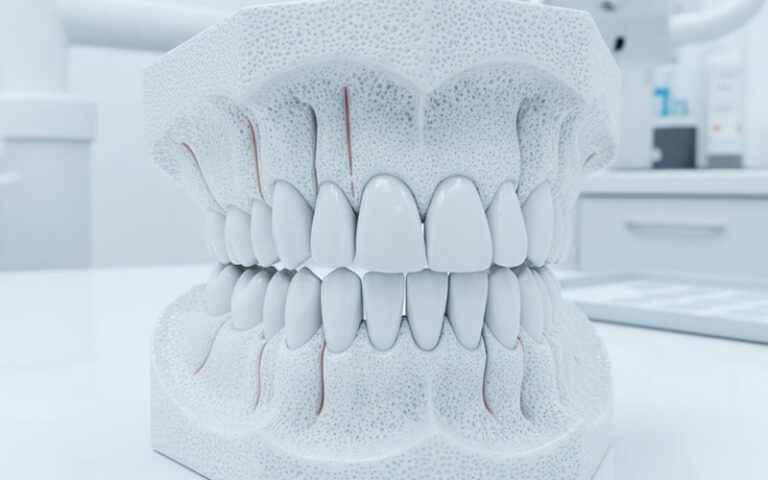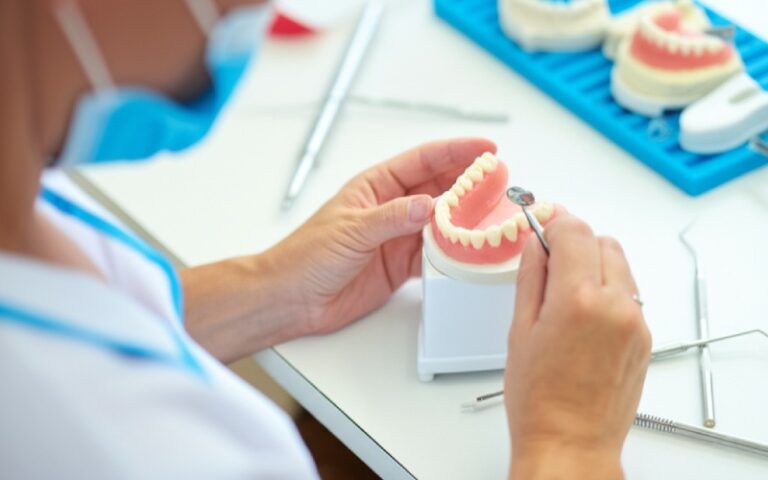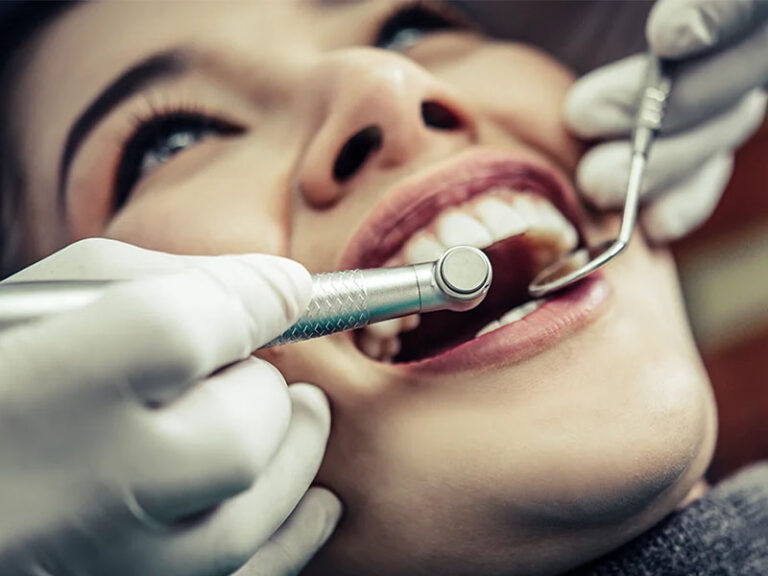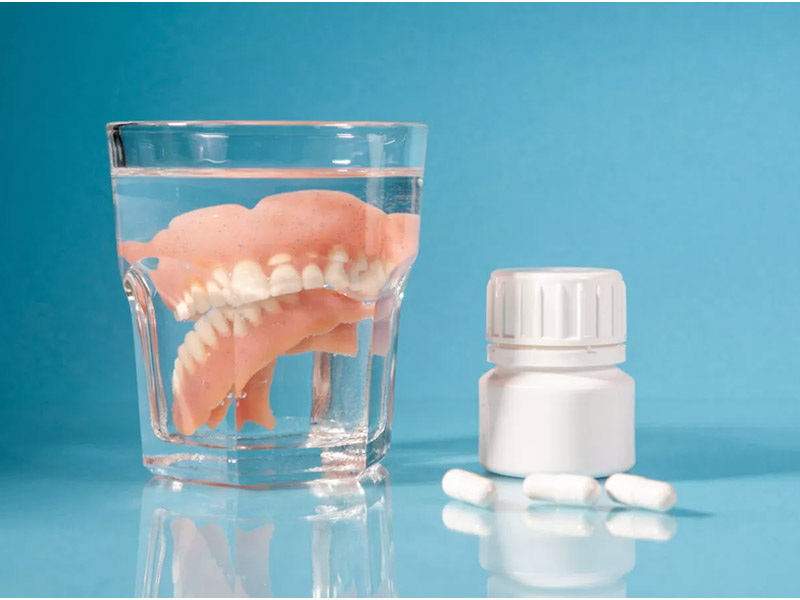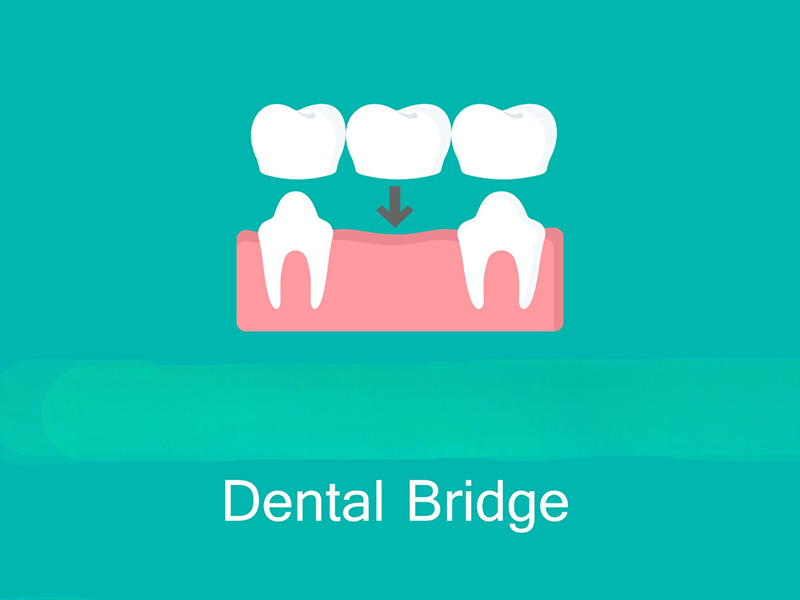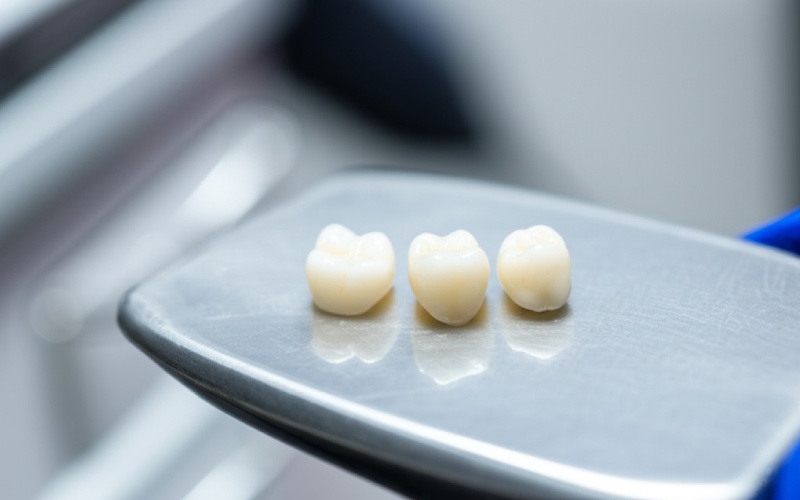
Zirconia Crowns vs. PFM Crowns: The Ultimate Comparison for Dental Restorations
Looking for a brighter, stronger smile? If you need a dental crown, picking the right kind matters a lot. In this easy guide, I’ll cover everything you need to know about zirconia crowns and porcelain-fused-to-metal (PFM) crowns. You’ll find out the good, the bad, and what works best—whether it’s for your front teeth, your back teeth, or even a tough dental bridge. Keep reading to make the smartest choice for happy, healthy teeth.
Table of Contents
What Is a Dental Crown and Why Might You Need One?
Let’s be honest—we all want nice, healthy teeth. But sometimes, a tooth gets hurt from a cavity, accident, or just from getting used a lot. So, what can you do when your tooth is broken or weak? That’s where a dental crown helps out.
A crown is kind of like a cap for your tooth. Dentists usually pick this when a tooth:
- Has a big hole from a cavity,
- Is cracked or broken,
- Needed a root canal,
- Has a big filling that isn’t holding up,
- Or looks bad (and you want a nicer smile).
The crown covers and protects your real tooth. It helps you bite, smile, and talk like normal. If you choose the right one, it can even look as good as—or better than—the real thing!
What Are Zirconia Crowns?
You might have heard about zirconia crowns at your dentist’s office or while searching for new dental stuff. But what are they, really? In short, zirconia crowns come from zirconium dioxide, which is an extra strong crystal.
Zirconia is in the ceramic group and comes in a few types:
- Monolithic zirconia: Pure, very strong, and made from one solid piece using computer tech.
- Layered zirconia: A tough zirconia base with porcelain on top for extra shine and a more normal look.
- High-translucency zirconia: Made so that light can go through, just like real teeth.
With today’s dental labs, these crowns look real and fit well. They’re a top pick in cosmetic dentistry and good for keeping teeth safe after bridges or implants.
Advantages of Zirconia Crowns
Now, let’s look at why zirconia is so popular. Over the years, I’ve seen plenty of people pick zirconia for good reasons. Here’s why you might like them too:
- Really strong: With strength up to 1200 MPa, zirconia is super tough. If you grind your teeth or chew hard food, it holds up well—a smart choice for front and back teeth.
- Looks great: You won’t see any metal or gray line near your gums. Zirconia crowns can be made to match your teeth almost perfectly. That means your smile looks natural, but your tooth is protected underneath.
- Kind to your body: These crowns almost never cause allergies or bother your gums. There’s no metal, so gums stay happier.
- Saves tooth: Often, your dentist doesn’t need to take away as much real tooth for a zirconia crown as they might with a regular PFM one.
- Lasts long: Studies say these crowns can last ten years or more if you take care of them. Many dentists think they’ll last even longer.
Are There Any Downsides to Zirconia Crowns?
But let’s be real—nothing’s perfect in dentistry. Here are some things to think about before choosing zirconia:
- Costs more at first: Zirconia crowns usually cost more than PFM. You could pay $1,200 to $2,500 for one (depending on where you go). Still, most people think it’s worth it for how good it looks and how long it lasts.
- Might look fake: If the dental lab doesn’t get the color right—or if they use an old kind—the crown can look a bit less clear or see-through than real teeth.
- Can wear down other teeth: If zirconia isn’t polished well, it can rub the tooth above or below. This is often not a big issue with new ways of making crowns, but it’s worth mentioning if you grind your teeth.
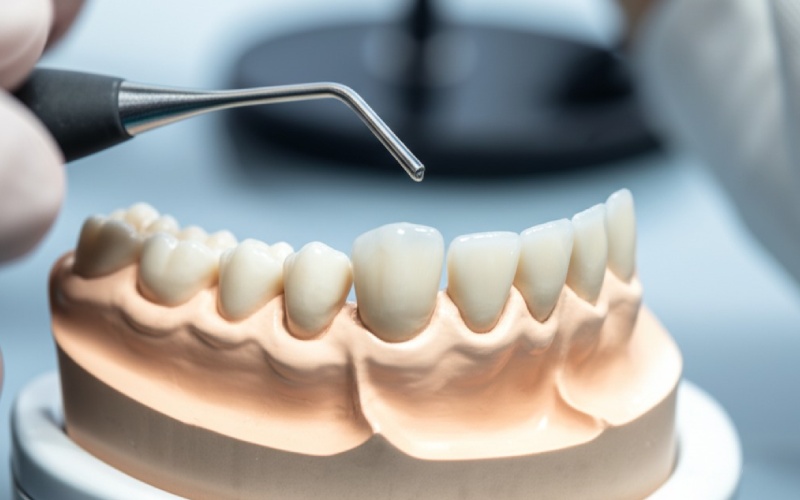
What Are PFM (Porcelain Fused to Metal) Crowns?
Now, let’s talk about PFM crowns—the old standby. PFM stands for Porcelain Fused to Metal. Dentists have used these for a very long time all across the world.
There’s a thin metal shell inside (could be gold, nickel, chromium, or another mix of metals). That keeps the crown strong and firm. On the outside, dental workers put on layers of white porcelain to make it look like a real tooth.
So, you get the strength of metal with the looks of porcelain. That’s why dentists still like them, especially for back teeth where you chew the hardest.
Good Things About PFM Crowns
Why do dentists and patients still use PFMs? Here’s what I see and what research shows:
- Very strong, especially for back teeth: The metal part acts like armor, so PFMs handle heavy biting well. Great for molars.
- Cheaper: These crowns usually cost $800 to $1,500 (usually less than zirconia), which helps stretch your budget.
- Proven: PFMs have been used for ages, with success rates over 90% at five years. People trust them, and most dental plans help pay for them.
- Snug fit: The way they’re made (using metal casting) helps them stick close to your natural tooth.
Bad Things About PFM Crowns: What to Watch For
But there are things to watch out for:
- Not as pretty: Because of the metal under the porcelain, light doesn’t shine through like it does in real teeth. Sometimes, if your gums pull back, a gray line might show at the gum. Not great for your front teeth.
- Porcelain can chip: The white layer on top can break or chip, especially if you bite hard or grind your teeth. Chipping is the main reason PFM crowns need to be fixed or swapped out.
- Need more tooth removed: Your dentist might have to take away more of your real tooth to fit a PFM crown.
- May cause allergies: Some people are allergic to certain metals in these crowns (like nickel). It’s rare, but if you get allergies, tell your dentist.
Zirconia vs. PFM Crowns: Which One Is Best?
Let’s see how they stack up side by side. This table gives you the facts to help you decide:
| Feature | Zirconia Crowns | PFM Crowns |
|---|---|---|
| Main Material | Zirconium dioxide | Metal + porcelain |
| Looks | Natural, real looking, no metal line | White but can show gray at gum |
| Strength | Very high | High |
| Tooth Removal Needed | Less | More |
| Allergy Risk | Very low | Sometimes |
| Chipping Risk | Very low (if one piece) | Medium to high |
| Lasts (5-10 years) | 95-98% work well | 85-95% work well |
| Cost (USD) | $1,200 – $2,500 | $800 – $1,500 |
| Best Use | Looks, metal allergies, single crowns, small bridges, implants | Molars, big bridges, tight budget |
If you want your front teeth to look nice, zirconia crowns are the best choice. If you need a strong crown for a back tooth and want to save money, PFM crowns are still a good pick.
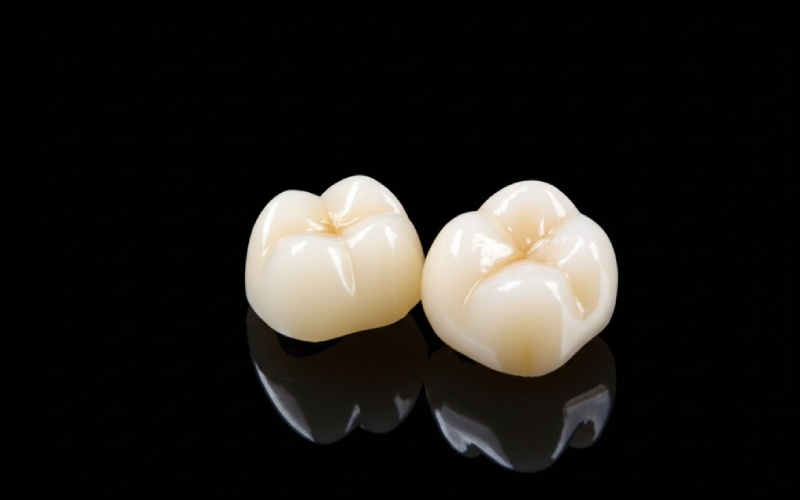
How Do Zirconia and PFM Crowns Hold Up Over Time?
You’re probably asking—will these crowns last, or will you need another trip to the dentist soon? Let’s check some real numbers from big dental studies:
| What We’re Looking At | Zirconia | PFM |
|---|---|---|
| Strength | 900-1200 MPa | 400-600 MPa (metal) |
| Porcelain Breaking | Under 3% at 5 years (almost zero if one piece) | 5-10% at 5 years |
| Survival at 10 years | 90-95% | 85-90% |
| Looks—Patient Rating | 9 out of 10 | 7 out of 10 |
| How Well It Fits | Very close (<50µm) | Very close (<50µm) |
| Wear on Other Teeth | Almost none (if polished) | Can wear other teeth |
Dentists usually say: If put in and polished right, both crowns will give you many years of use. Biggest difference? How they look and how easy it is to chip. Zirconia crowns often look better and last longer, with fewer breaks.
How Do Dentists Put Crowns In?
You might feel nervous about getting a crown. No worries—I’ll walk you through what really happens:
- Check-up & X-rays: Your dentist looks at your tooth, your bite, and sometimes takes pictures or digital scans.
- Tooth Shaping: The dentist shapes your tooth. With zirconia, they usually need to remove less.
- Temporary Crown: You wear a quick, fake crown while the real one is made at the lab.
- Final Crown: Your dentist glues the real crown on and checks that it fits well. They make sure your gums and bite feel good.
Thanks to new computer tools, crowns today fit really snugly and feel natural. The whole process usually takes two appointments.
How to Pick the Right One With Your Dentist
Still can’t choose between zirconia and PFM? Here’s how I help folks decide:
- Where’s the tooth? If it’s in front, how it looks matters most. Zirconia almost always wins here. If it’s a back tooth, both work, but zirconia chips less.
- How much can you spend? Not all dental plans pay for zirconia, so check yours first. If you’re trying to save, PFM can be the answer.
- Your health matters: Allergic to metals or have sensitive gums? Go with zirconia (no metal at all).
- Do you grind your teeth? Tell your dentist. Zirconia is strong against that, but a nightguard is also smart.
- Dentist’s skill: Some dentists are more used to making one kind over the other. Ask your dentist which one they can do best and why.
Write down what’s important for you. Talk openly when you visit your dentist. They’ll check things like your smile, your bite, gums, and any health issues before giving advice.
Taking Care of Your Crown: How Do You Make It Last?
Getting a crown is just the first step. Want your new tooth “cap” to last a long time?
- Brush your teeth twice a day. Any good toothpaste will do. Clean close to the gums.
- Floss every day. Yes, even around crowns! This stops gum problems and keeps edges tight.
- Visit your dentist for check-ups. Small problems (like early chips or a loose crown) can be fixed easily if you catch them.
- Don’t bite hard stuff. Crunching on ice, hard candy, or popcorn kernels can break even tough crowns.
- Wear a nightguard if you grind your teeth. It protects your crown and other teeth too.
Summary: Quick Facts to Remember
- Dental crowns fix, protect, and make damaged teeth look better. Picking the right one is a big deal.
- Zirconia crowns are tooth-colored, super strong, and safe. They cost more but look great and stay nice longer—especially up front or if you react to metal.
- PFM crowns are affordable, reliable, and sturdy on the inside. But metal can show as a dark edge and they break easier.
- Getting a crown doesn’t hurt; your dentist will help you the whole way.
- Looking after your crown means brushing, flossing, and skipping hard snacks.
Still unsure which crown is best? Book a time at SampleDentalClinic.com or call us. Let’s build your best smile together—one crown at a time.
References
- Journal of Prosthetic Dentistry
- International Journal of Prosthodontics
- Clinical Oral Implants Research
- Journal of Dentistry
- Cochrane Library
- JADA (Journal of the American Dental Association)
- American Dental Association – Crowns
- SampleDentalClinic.com Dental Crowns Service
Key Takeaways
- If you care most about how your smile looks and how your gums feel, zirconia crowns are the best pick, especially for your front teeth.
- PFM crowns are tough and cost less, so they’re good for back teeth or bigger jobs.
- Always talk with your dentist about all your options, and keep up with your visits to keep your crown strong and good-looking!
Ready for your new tooth crown? Let’s make your next dentist visit something worth smiling about.

